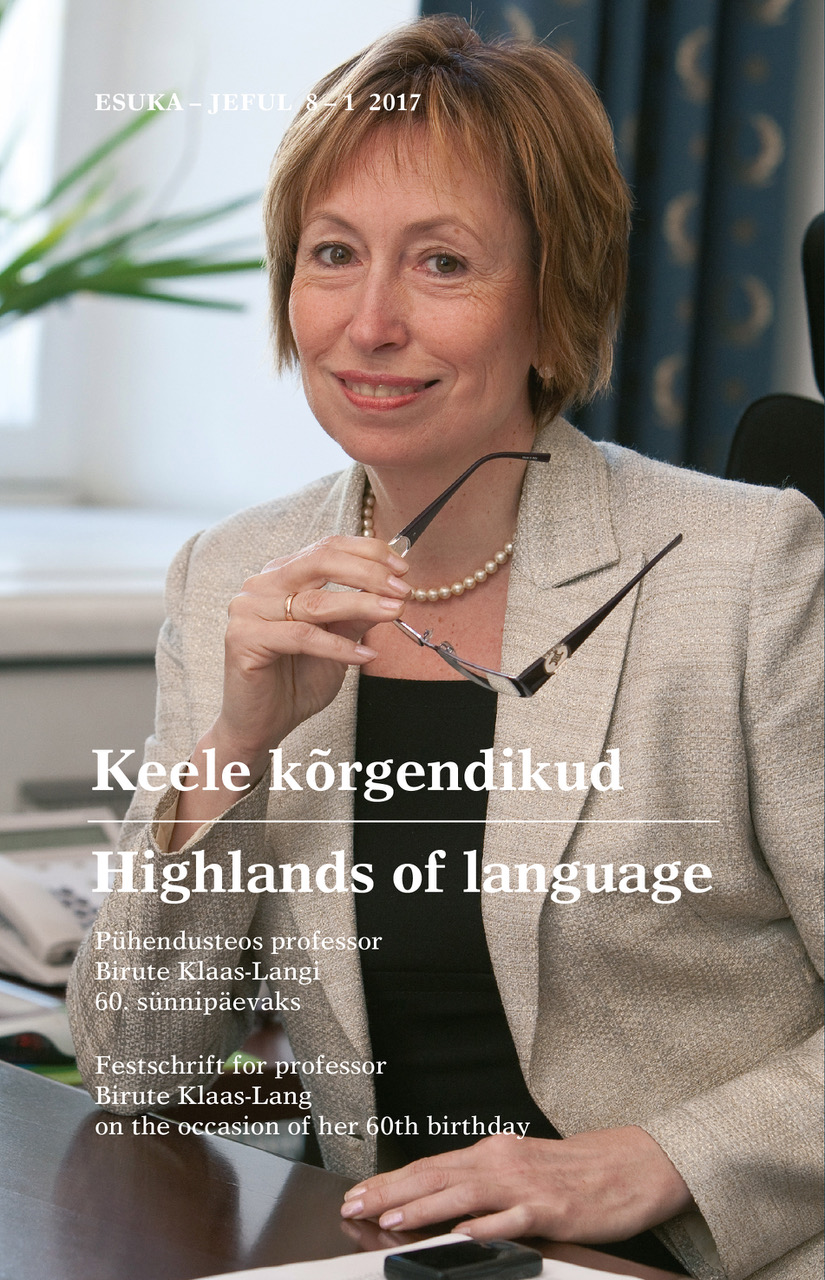Riik räägib rahvale: soomekeelsed korraldused Rootsi ajal
DOI:
https://doi.org/10.12697/jeful.2017.8.1.15Keywords:
Rootsi seadusandlus, tõlkimine, soome vana kirjakeel, neologismid, palve päevaplakatid, jumalateenistuse kulg, rahva distsiplineerimineAbstract
Kuningas ja lääniülemad avaldasid Rootsis 16. saj alates korraldusi, mida levitati kas rahvakoosolekutel või kirikukantslist ette lugedes. See tava kodifitseeriti 1686. a kirikuseadusega. Korralduste ettelugemine muutus jumalateenistuse osaks ja nende kuulamine oli kõigile kohustuslik. Kuna riigi idaosas Soomes ei osatud rootsi keelt, hakati korraldusi soome keelde tõlkima, mistõttu Rootsi võimuperioodi lõpuks moodustasid sellised tekstid umbes neljandiku kõikidest korraldustest. Selle süsteemi tugisammasteks muutusid Kantseleikolleegiumi juures tegutsenud soomendajad ja kuninglik trükikoda, kellel oli korralduste publitseerimise privileeg. Tekstidest olid kõige tähtsamad 3–4 korda aastas esitatud palvepäevaplakatid, mis sisaldasid aktuaalseid uudiseid kõnealuse kirikupüha jaoks Piibli tekstide valguses. Korraldusi trükiti 17. saj enamasti Turus, kuid 18. saj peamiselt Stockholmis.
Korralduste tekstidel on varasemal ajal arvatud olevat suhteliselt vähene tähendus soome kirjakeele arengule, mis hakkas 19. saj kulgema purismi suunas, loobudes tollases kultuurkeeles tavalistest rootsipärasustest. Uuemad vana soome kirjakeele uurimused näitavad siiski, et kuulmise järgi omandatud ning tõlkijate loodud uudissõnu ja neologisme oli rahvakeelde kandunud üsnagi suurel määral ja sedakaudu siirdusid nad ka tänapäeva soome keelde. Nõudlus soomekeelsete tekstide järele riigi idaosas ei näita 16.–18. saj mitte soomlaste rahvustunnet, vaid selle aluseks oli hoopis vajadus tagada kõikide inimeste võrdsus seaduse ees. Korraldustel oligi suur ühiskondlik tähtsus laiade rahvakihtide õigustaju arenemise ja seadustetundmise lisandumise seisukohast.
Abstract. Kari Tarkiainen: The state speaks to the people: Ordinances issued in Finnish during the era of Swedish rule. In Sweden, the king and governors issued ordinances since the 16th century that were disseminated by reading them out at public meetings or from the church pulpit. This custom was codified by the ecclesiastical law of 1686. The reading out of ordinances became a part of the church service and it was compulsory for everyone to listen to them. Since people in Finland, which was the eastern part of the nation, did not understand Swedish, the ordinances started being translated into Finnish, for which reason such texts accounted for about one fourth of all ordinances by the end of the period of Swedish rule. The persons working for the Chancellery Council who translated the texts into Finnish and the royal printing house, which possessed the privilege for printing the ordinances, became the mainstays of this system. The most important of the texts were the placards presented 3–4 times a year proclaiming days of prayer, which included topical news for the church holiday in the light of biblical texts. Ordinances were printed mostly in Turku during the 17th century, but mostly in Stockholm in the 18th century.
In earlier times it was thought that the texts of these ordinances had relatively little meaning for the development of written Finnish, which started proceeding in the 19th century in the direction of purism, rejecting common Swedish idioms from the civilised language of that time. More recent studies of old written Finnish nevertheless indicate that new words and neologisms adopted by ear and created by translators had carried over into popular language to quite a great extent and were transferred from there into contemporary Finnish as well. The demand for texts in Finnish in the eastern part of the nation is not indicative of the national feeling of Finns in the 16th–18th centuries. Instead, the basis for this was the need to ensure the equality of all people before the law. The ordinances were indeed very important socially in developing perception of the law among the broad strata of the population and in adding knowledge of the laws.
Keywords: Swedish legislation; translation; old written Finnish; neologisms; placards declaring days of prayer; the course of a church service; disciplining of the people


